In the diverse world of art, countless techniques and styles have emerged, each offering unique expressions and aesthetics. Two such captivating methods, pointillism and stippling, have captured the interest of artists and art enthusiasts alike. In this article, we’ll delve into the fascinating world of pointillism vs stippling, comparing and contrasting these two distinctive approaches to create intricate, textured visuals. By examining the origins, characteristics, and applications of each technique, we’ll gain a deeper understanding of their artistic value and potential, allowing artists to make informed choices about which method best suits their creative vision.
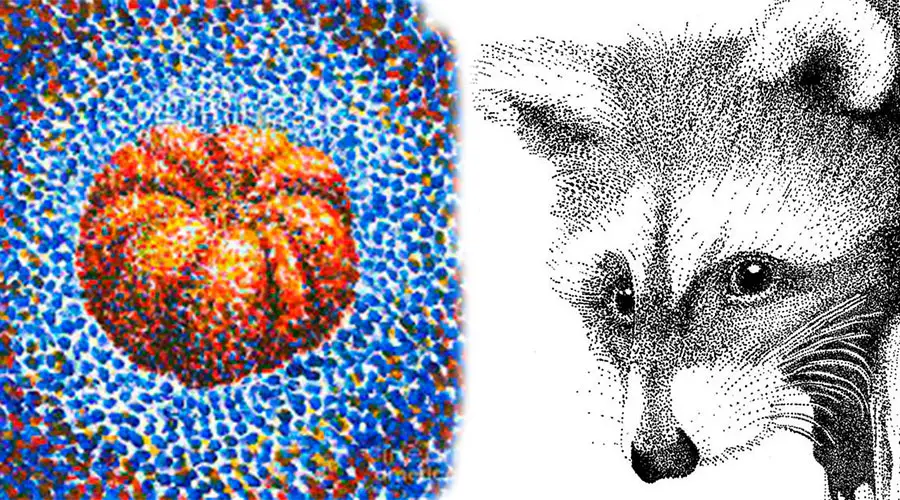
The Origins of Pointillism and Stippling
The birth of pointillism
Pointillism, a revolutionary painting technique, was founded by French artist Georges Seurat in the late 19th century. Seurat’s innovative approach to color and form, which involved placing small dots of pure color side by side on the canvas, brought a new perspective to the world of art.
This unique method emerged during the Post-Impressionist movement, a time when artists sought to expand on the principles of Impressionism while exploring new creative avenues. Pointillism, with its focus on color theory and optical blending, became a significant part of this artistic evolution.
The origins of stippling
Stippling, a technique that involves creating an image using a series of small dots or marks, can be traced back to prehistoric art and engraving. Early humans used stippling to depict animals and scenes in their cave paintings, using rudimentary tools to create a sense of depth and texture.
Over time, stippling gained popularity in printmaking and illustration, becoming a preferred method for artists working in various mediums, including ink, pencil, and engraving. The technique’s ability to convey subtle variations in tone and texture made it a valuable tool for artists looking to create visually striking, detailed images.
Techniques and Characteristics
Pointillism
- At its core, pointillism is defined by the use of small dots of pure color applied to the canvas. These tiny dots, or points, are strategically placed to create the desired image or scene.
- One of the key principles of pointillism is optical mixing. Instead of physically blending colors on the canvas or palette, pointillism relies on the viewer’s eyes to mix the colors as they perceive the artwork from a distance. This optical mixing generates a vibrant, luminous effect.
- Pointillism places a strong emphasis on color theory and visual harmony. Artists utilizing this technique carefully consider the interaction between colors, ensuring a balanced and harmonious composition that appeals to the viewer’s senses.
Stippling
- Stippling, like pointillism, involves the use of small dots to create an image. However, stippling often employs black and white or monochromatic color schemes, focusing on the contrast and gradation of tones to achieve depth and texture.
- The key to stippling is building up tones through dot density. Areas with a higher concentration of dots appear darker, while areas with fewer dots appear lighter. By manipulating the density of dots, artists can create a wide range of tones and textures in their work.
- Stippling is commonly used for shading and texture in drawing and printmaking. Its versatility and adaptability make it an attractive technique for artists working in various mediums, from pencil and ink drawings to etchings and engravings.
Famous Artists and Works
Pointillism
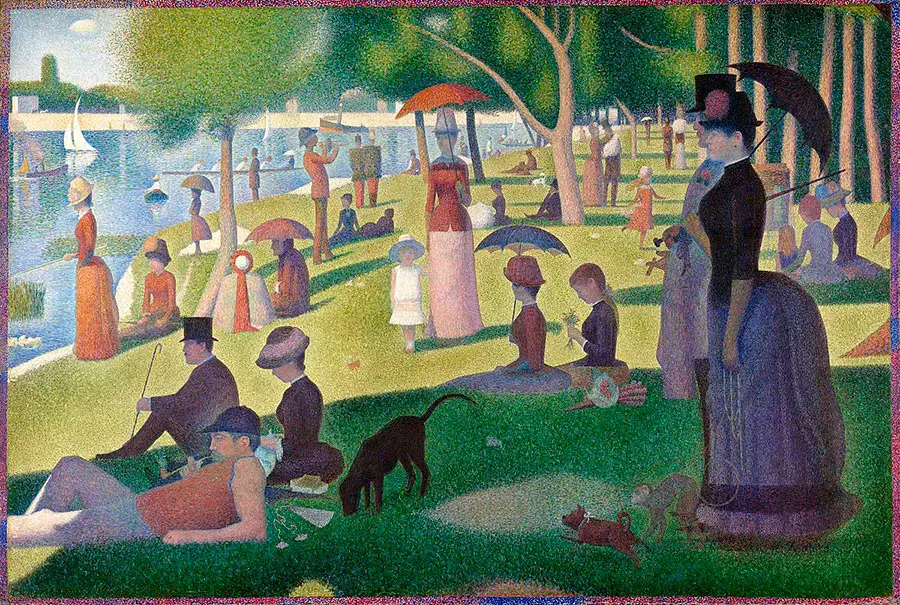
- Georges Seurat is perhaps the most renowned pointillist artist, and his masterpiece, “A Sunday Afternoon on the Island of La Grande Jatte” stands as an iconic example of the technique. Painted between 1884 and 1886, this large-scale work showcases Seurat’s innovative use of color and form, captivating viewers with its detailed, vibrant composition.
- Paul Signac, a close friend and collaborator of Seurat, was another prominent figure in the world of pointillism. His painting, “The Pine Tree at St. Tropez,” is a stunning example of the pointillist style. Signac’s careful placement of colored dots results in a mesmerizing portrayal of light and atmosphere, perfectly capturing the essence of the Mediterranean landscape.
Stippling
- Giulio Campagnola, an Italian artist and printmaker of the Renaissance era, is known for his pioneering work in stippling. “The Adoration of the Shepherds” an engraving by Campagnola, beautifully demonstrates his mastery of the technique, utilizing a myriad of tiny dots to create a sense of depth and texture in the scene.
- Chris Gheran is a contemporary artist who has gained recognition for his exceptional stippling work. Using modern tools and materials, Gheran meticulously crafts intricate images, often inspired by nature and wildlife. His detailed, monochromatic pieces are a testament to the enduring appeal and versatility of the stippling technique.
Practical Applications of Pointillism vs Stippling
Pointillism
- Fine art paintings: Pointillism is often associated with fine art, as it allows artists to create vivid, luminous paintings that showcase their mastery of color and form. The technique lends itself well to landscapes, still lifes, and portraits, providing a unique visual texture and depth.
- Digital art and design: With the advancements in digital technology, pointillism has found new applications in digital art and design. Artists can now create pointillist-style images using digital tools and software, enabling them to experiment with color, blending, and composition in innovative ways.
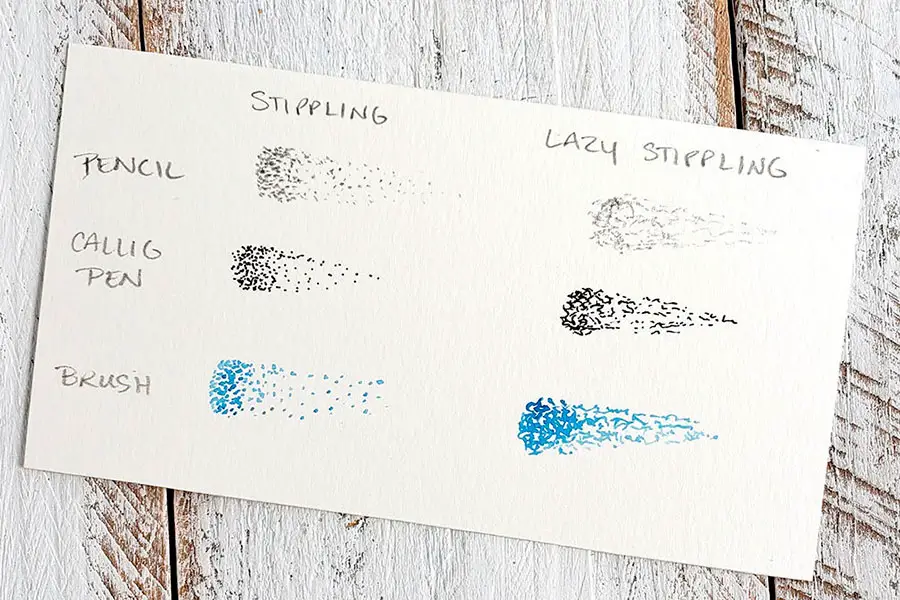
Stippling
- Illustration and printmaking: Stippling is a popular technique in illustration and printmaking, as it allows artists to create detailed, high-contrast images with a wide range of tones and textures. The method is particularly suited to pen and ink drawings, etchings, and engravings, where its precision and versatility shine.
- Tattoo art: The stippling technique has gained popularity in the world of tattoo art, as its distinct visual style and adaptability make it an attractive option for both artists and clients. Stippling tattoos often feature detailed, monochromatic designs that emphasize shading, depth, and texture, resulting in unique and striking body art.
Choosing the Right Technique for Your Art
Factors to consider
- Desired visual effect: Before deciding on a technique, consider the visual effect you want to achieve in your artwork. Pointillism is well-suited for vibrant, luminous compositions, while stippling excels at creating detailed, high-contrast images.
- Color vs. monochrome: If you prefer working with a rich, diverse color palette, pointillism may be the better choice. However, if you enjoy working in black and white or with a limited color scheme, stippling might be more suitable.
- Medium and tools: Consider the medium and tools you plan to use, as some techniques may work better with specific materials. For example, pointillism is commonly associated with painting, while stippling is often used in pen and ink drawings, etchings, and engravings.
Advantages of pointillism
- Rich, vibrant colors: Pointillism allows artists to create stunning, vibrant colors by taking advantage of optical mixing and color theory.
- Unique visual texture: The distinct dotted texture of pointillism adds a unique visual appeal to artwork, setting it apart from other styles.
- Optical mixing for natural color blending: Pointillism’s reliance on optical mixing results in a more natural and harmonious blending of colors, creating a cohesive and visually pleasing composition.
Advantages of stippling
- Precise control over shading and texture: Stippling offers artists precise control over shading and texture, enabling them to create detailed, intricate images that showcase their skill and craftsmanship.
- Suitable for monochromatic or limited color schemes: Stippling works exceptionally well with black and white or limited color schemes, allowing artists to focus on tonal contrasts and depth.
- Works well with various mediums, including ink, pencil, and engraving: The versatility of stippling makes it a popular choice for artists working in various mediums. From pen and ink drawings to etchings and engravings, stippling can be adapted to suit a range of artistic styles and materials.
Tips for Getting Started with Pointillism and Stippling
Practice and patience: Both pointillism and stippling require a steady hand and a keen eye for detail. As with any artistic technique, practice is crucial for developing your skills and refining your style. Be patient with yourself as you learn and grow, understanding that mastery takes time and dedication.
Experiment with different tools and materials: To discover the best approach for your unique artistic vision, experiment with various tools and materials. For example, try different types of paint, brushes, or pens to see how they affect the outcome of your pointillist or stippled artwork.
Study the works of masters in each technique: Analyzing the work of accomplished artists who have excelled in pointillism or stippling can provide invaluable insights into these techniques. Observe their use of color, composition, and texture, and consider how you might incorporate their methods into your own artwork.
Attend workshops or online classes to develop skills: To further improve your understanding and ability in pointillism or stippling, consider attending workshops or enrolling in online classes. Learning from experienced artists can offer practical guidance, constructive feedback, and inspiration to help you refine your techniques and cultivate your artistic style.
Conclusion
In this exploration of pointillism vs. stippling, we’ve highlighted the key differences between these two captivating techniques. Pointillism, with its vibrant colors and optical mixing, offers a unique approach to painting that emphasizes visual harmony, while stippling excels at creating intricate, high-contrast images through precise control of shading and texture. Both techniques hold immense potential for artists looking to expand their creative horizons.
Aspiring artists are encouraged to explore and experiment with these techniques, discovering the unique possibilities that each offers. By delving into the rich history and diverse applications of pointillism and stippling, artists can unlock new dimensions of artistic expression and continue to grow and evolve in their craft. Ultimately, it is through the exploration of diverse methods and the pursuit of personal expression that artists can truly flourish and make their mark on the world of art.
Frequently Asked Questions
In this FAQ section, we address some common questions that might arise when exploring the world of pointillism and stippling. These questions and answers aim to provide further insights and clarify any uncertainties not covered in the main article.
How long does it take to master pointillism or stippling?
The time it takes to master pointillism or stippling varies from person to person, as it depends on factors such as individual skill, dedication, and the amount of practice one puts into learning these techniques. Some artists may become proficient within a few months, while others might take years to truly master these styles. The key is to be patient and consistently practice to develop and refine your skills.
Can pointillism and stippling be combined in a single artwork?
Yes, pointillism and stippling can be combined in a single artwork. Combining these techniques can result in unique and visually striking pieces that showcase the best of both worlds. For example, an artist might use pointillism for vibrant color areas and stippling for detailed shading or texture. It’s essential to experiment and find a balance that works best for your individual style and artistic vision.
What are the best surfaces to use for pointillism and stippling?
For pointillism, artists typically work on canvas, as it provides a suitable surface for applying the small dots of paint. However, other surfaces, such as paper or wood panels, can also be used. In the case of stippling, smooth, high-quality paper is often preferred, as it allows for better control and precision when working with ink or pencil. Stippling can also be applied to surfaces such as wood, metal, or even skin in the form of tattoos. The choice of surface will depend on the medium and the desired outcome of your artwork.
How can I prevent my hand from getting tired while working with these techniques?
To prevent your hand from getting tired while working with pointillism or stippling, take regular breaks and stretch your fingers and wrists. Maintain a relaxed grip on your tools and avoid applying excessive pressure. Additionally, consider using ergonomic tools or grips to reduce strain and ensure proper hand positioning.
Are there any specific tools or materials recommended for beginners in pointillism or stippling?
For beginners in pointillism, it’s recommended to start with acrylic paints and round or pointy brushes of varying sizes. Acrylics are easy to work with and dry quickly, allowing for faster progress. For stippling, beginners can start with fine-tipped pens or pencils and high-quality, smooth paper. As you gain experience, you can explore different tools and materials to find what works best for you.
How do I choose the right colors for a pointillist painting?
When choosing colors for a pointillist painting, consider the principles of color theory and complementary colors. Select a base color palette and experiment with various combinations to achieve the desired effects. Keep in mind that adjacent colors will blend optically when viewed from a distance, so consider how colors will interact when creating your composition. Studying the works of pointillist masters can also provide valuable insights into color selection.
How do I create smooth transitions between different tones in stippling?
To create smooth transitions in stippling, gradually adjust the density of dots between lighter and darker areas. For lighter tones, space your dots further apart; for darker tones, place them closer together. Practice and experimentation are essential for mastering these transitions and achieving a seamless, natural look.
References:
- The Art Story: https://www.theartstory.org/
The Art Story is a valuable resource for art enthusiasts, providing in-depth information on various art movements, artists, and artworks. It covers a wide range of art styles, including Pointillism and Post-Impressionism, and can be a reliable source of information for your article. - Tate: https://www.tate.org.uk/
Tate is a well-respected institution that operates multiple art museums and galleries in the United Kingdom. Their website offers a wealth of knowledge about artists, art movements, and specific works, making it a trustworthy source for information on Pointillism and Stippling. - The Metropolitan Museum of Art (The Met): https://www.metmuseum.org/
The Met is one of the world’s largest and most renowned art museums, housing an extensive collection of artwork from various periods and regions. Their website features informative articles and resources about art history, techniques, and artists, making it an authoritative source for researching Pointillism, Stippling, and related topics.




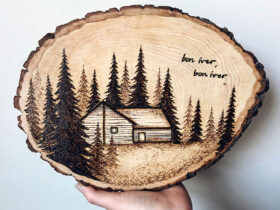

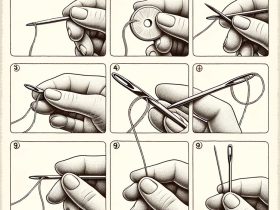
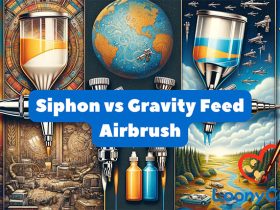

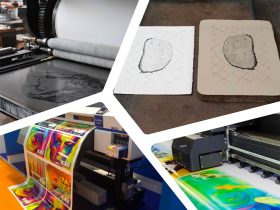


Leave a Reply